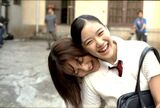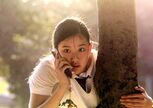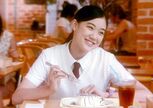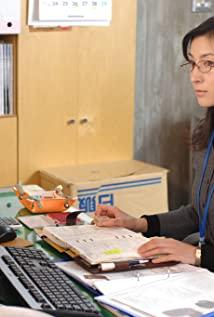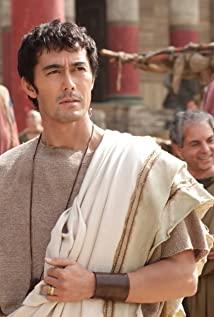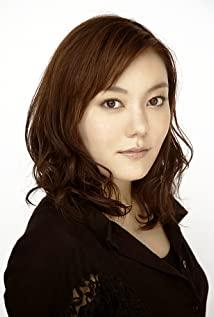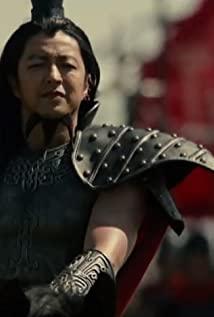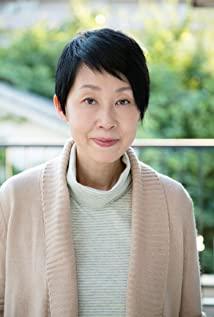1. The
main plot centered on the flower is the love between the flower and Miyamoto, the friendship between the flower and Alice, the community relationship between the flower, and the family relationship between the flower (brief introduction)
2.
Alice and Alice as the center The relationship between flowers, the relationship between Alice and her father, the relationship between Alice and her mother, Alice's career, the relationship between Alice and Miyamoto (the core is the relationship between Alice and her father)
3.
Miyamoto and Miyamoto as the center The relationship between Alice and Miyamoto and the flower
can be seen. In the story, the director's description of Alice is the most important.
The following is split, and
the character is centered on the flower. The character of the flower can be reflected through the first date with Miyamoto. The flower is a relatively passive and introverted girl in the friendship with Alice. It is a relatively sharp contrast, and in the opening scene where the two are fighting at the station, Alice runs in front,
and Hua asks "Where are you going?" In the relationship with Miyamoto, Hua forms a character But it is the image of a girl who is active, bold and brave in love, especially when she fabricates lies and controls Miyamoto's memory.
As for the portrayal of the character arc of Hua, the performance of the film is relatively obscure. The first point is Hua's family. In the film, Hua lives in a neat villa full of flowers. It can be seen that Hua's family environment is relatively perfect and A happy mother who only appears once, from the shaping of her underwear and words and deeds, it can be seen that she is a white-collar lady with relatively high social status, but she is busy with work and neglects to take care of her children, so her inner character is relatively lonely. The second point is that in the relatively later part of the film, when Hua was visiting the art exhibition, the words her classmates told her could also reveal Hua's inner character, fear of going to school, withdrawn character, but with the help of Alice, she joined The ballet club has formed a character that relies on Alice, and at the same time has grown a more healthy social personality and re-entered the society. All of this is due to Alice. Therefore, behind the scenes at the back stage, she said that she took the initiative to withdraw from her love with Miyamoto, and let her re-enter the society. A word to my friend Alice.
Summary: The character of flowers, surface layer: introverted in friendship, active in love, inner layer: dependent in friendship, tolerant in love.
Then there is the characterization of Alice. The story is very obvious in the portrayal of Alice's character arc. Two of them are particularly important, Alice's family, Alice's modeling career, the first is the family, Alice is obviously a single-parent family At the same time, I have to take care of my mother. I am very sensible, but in the process of growing up, I lack father's love. This has been clearly revealed at the beginning of the film. My mother's boyfriend, a messy family, I love you to my father. , but an interesting setting of the story is that in the process of all this happening, Alice's performance was very accidental, and she was familiar with the car. It's nothing, but in the second half of the film, Alice insists on pinning her love for her father on the palace itself. Alice's performance here shows how deep her obsession with her father's love is until the end. , When Alice gave her father's card to Miyamoto, Alice completely let go of her obsession with her father, went on the road bravely, and danced the most beautiful ballet.
Another important characterization for Alice is Alice's career, but in fact, the characterization here is relatively simple, but this line has been entangled in the main plot, which is the friendship with the flower. At the beginning of the film, Alice's unnaturalness and incompatibility in the interview can also be seen, when Alice is alone in the face of society, she lacks the courage of a man because of the lack of her father. There was no doubt that she was timid during the interview, but in the end, Alice let go of her father's obsession and perfected her personality. Here, Alice grew up and got the rewards of her work.
Summary: The relationship between Hua and Alice: Although they both have their own obsessions, Hua's love (love woven with lies), Alice's affection (the affection of others), and their misplaced obsessions, in In the middle of the film's development, the friendship between the two was overwhelmed, but in the end, both of them came to their senses and returned to a mutually dependent, beautiful and precious friendship.
As for the character of the male protagonist Miyamoto, in fact, everyone thinks that Miyamoto is a Muna boy. In fact, under the appearance of Miyamoto Muna, he is actually a very delicate person. This is in the computer that he took the initiative to turn over. It can be seen from the photos that he has already seen through everything, and also knows the lies of flowers, and Alice is not really in love with him.
The plot layout of the story
1 The beginning is two people walking on the street and the platform, revealing the relationship between the two, this part is quite simple, and it ends in less than 3 minutes
2 Then comes the appearance of the male protagonist Miyamoto, and the flower appears right Miyamoto's pursuit, embarked on the road of quest.
3 The film is interspersed with the conversation between Hua and Alice, revealing the relationship between the two, and at the same time revealing the ballet club and the upcoming high school.
After 4, the two entered the high school campus in the beautiful cherry blossoms. At this point, the three protagonists came on stage and the first act ended. The story is about to enter the second
act of the main plot of flowers and Alice and Miyamoto. The second act begins
1. Join the club, and the leader of the comic dialogue club will appear.
2 The Inciting Incident appears, Miyamoto bangs his head (Miyamoto's Inciting Incident, Miyamoto embarks on a quest to restore memory), The beginning of the flower lie, (The flower wants to make Miyamoto believe his lie)
3 Hospital, restaurant date, In fact, it is the second sequence of the second act. Miyamoto and Hana further explore forward, and there is Alice here.
4 After that, Hua pressed Miyamoto, which accelerated the intensification of the conflict, but the transition point was, Miyamoto's answer, he said that he began to care about Hua, and his needs were met. Followed by the sequence of two people dating and playing, until the computer was repaired.
5 There are two contradictions in the computer repair, Alice's friendship needs, and Miyamoto's needs to restore memory, and Hua refused Alice's invitation in this scene, the friendship boat overturned, and Miyamoto found his photo, Begin to discover the lies of flowers.
6 Cinema + running, a contradiction, Miyamoto's dislike of slugs is actually a foreshadowing, Miyamoto is allergic to the jelly behind.
7 Miyamoto called to ask about the photo, a contradiction. Miyamoto exposed the lie of the flower, and the flower used a bigger lie to resolve the contradiction. (This paragraph also reveals Miyamoto's family, and at the same time leads to Alice's story line)
8 This can be said to be a transitional sequence, Alice promised to help the flower lie.
9 The ballet photo sequence, showing the circle of friends between Hua and Alice, also paved the way for the transformation of the latter. This section has background music, and the mood is more powerful.
10 The restaurant sequence, which is also a transition sequence, takes over the matter between the flowers and Alice above to Alice's family, and the rhythm of the mother selling her daughter starts here.
11 Alice's dinner sequence, entering Alice's house for the first time, here chooses to use a long shot to further express the family environment, and this section expresses the mother-daughter relationship very deliberately, and uses irony.
12 Ballet + Alice interview sequence, Alice did not go to the ballet class, everyone was asking where the flowers went, the topic was brought back to the relationship between the flowers and Alice, the influence of the lie of the flowers became more and more serious, the contradiction intensified, and then again Zi went to Hua's interview site and buried a little thing for Alice's interview. During the interview, Alice's unskilled performance became Alice's conflicting point, how to get a job. This sequence has continued with three similar interviews, variety shows, TVC, movie dramas, and it can be seen that Alice is not familiar with this type until the final call is rejected.
13 The sequence of Alice and her father also leads to the core of Alice's plot line. The father's love is missing. I bought several foreshadowings here. The design of the episode is very good. The director solved the problem through the father's use of Chinese, which aroused the daughter's interest in learning Chinese. It can be said that Iwai Shunji's ability to control emotions is very reflected here. The father seems to be unintentional, but step by step grasps the daughter's heart. , also captured the hearts of the audience. First of all, the daughter was very indifferent when giving gifts, but after a meal, the foodie daughter got closer to her father, and then went for a walk. The daughter also ignored it, and then the father played cards with her daughter. , all of a sudden hooked the daughter's curiosity, and then suddenly the daughter took the initiative to chat with the father, the father immediately returned to the father's place, especially when picking up the phone, the father finally solved the problem in the father's attitude, the father is tall The image was established in the daughter's heart at once, followed by the coffee shop. The father confessed to his daughter by teaching Chinese as an excuse, and the music was just right, but Shunji Iwai was also cruel, and then he directly planned the father's departure and the daughter's reluctance. Everyone looked distressed.
14 In the work sequence, the director is even more cruel. After leaving his father, he threw Alice back into the society, and sarcastically asked Alice, what is your saddest thing.
15 Ballet excessive sequence, this section has doubts, It seems that the director made the structure of ballet, work, father, work, ballet, here is a little trick, the flower is mentioned in the head, not a close-up of the flower head, but the X-ray image of the head in the distant hospital. close up.
16 In the transition sequence, Alice and Miyamoto meet in the hospital, which leads to the plot of Alice and Miyamoto.
19 The plot returns to the main plot at once, the love triangle of the three officially begins, Alice calls Hua, and Hua officially hands Miyamoto to Alice.
20 Here is the sequence of Miyamoto Alice, two needs appear, Alice tries to help Hanahara Lie, Miyamoto tries hard to ask the story between him and Alice. The turning point was where Alice told Miyamoto that this was our first kiss. I have doubts here, and I didn't see the reason for the turning point. It is estimated that the director will explain it later.
21 The temple fair and Alice's house, Miyamoto was frightened by Alice who was like a female ghost, and Hua took over Miyamoto again. This is also a point of doubt for me. At home, Miyamoto expressed his love for Alice, and left Hua to buy medicine alone.
22 When Mom came home, Hua, Alice, and Miyamoto met awkwardly. This was a warm-up for the climax. Everyone thought that the three of them would explode here, but in fact, the explosion point was delayed, which made the audience hold their breath. When entering the next sequence, the three of them had their own thoughts, which intensified the conflict.
23 Playing cards at the beach and tearing up, the inner conflict of the three people was released at once, which can be said to have reached the first climax of the film. And the point of playing cards by the sea also echoes the previous Alice playing cards with her father. At the same time, the scheduling of the lines in it is also quite intentional to continue to promote contradictions, such as jumping the big rope, Miyamoto said how to jump rope for two people, Alice constantly Seduce Miyamoto, pick up cards and gamble on the beach, but in the end, the director ironically ended with a scene of three people taking the bus home.
24 The career sequence is a transition, Alice’s career is not going well, she is reduced to light, and her mother is crying when she comes home, which also prepares the emotions for the climax of the subsequent sequence
25 Alice is dating the male protagonist, Alice has been making up stories, the male protagonist Gradually, I found that Alice was making up stories and didn't really like him. Finally, the male protagonist exposed her, which made Alice suddenly wake up. She faced the friendship of flowers, her love for Miyamoto, her father's affection, and her mother's love. Disappointment with the career, accumulated and erupted together, and finally cried. When they parted under the tree, Alice gave this deck of cards to Miyamoto, which also indicated that she would throw away her thoughts of her father and become an independent person, Ellie. Si here made up for her lack of personality and love for her father, so she successfully jumped out of the ballet in the final interview, not relying on anyone but her own efforts.
26 The story goes back to the flower, the flower who lost the male protagonist is practicing cross talk hard, the first sad close-up is lonely and the close-up of Alice is followed by the story of Alice above, and a group of running girls in the back, I have to admire it, I feel a little sad. Swept away by the hard practice of this scene, the director is very powerful, and this turning point is superb.
27 At the same time, the story also officially entered the climax of the flower. In the context of the cultural festival, he confessed his true feelings to Miyamoto. There are three dramatic contradictions before the final confession. Second, Hua and Miyamoto are arguing over a card, but Astro Boy appears here, which is quite ironic. Here is a small episode, that is, the flower is pulled to see the photo, which can be said to pave the way for the later emotional explosion, strengthen the relationship between the flower and Alice, and make this dilemma, Alice or Miyamoto, in the heart of the flower. When the conflict started, the third drama conflict began, Hua was pulled to the rescue, the atmosphere began to build, and the final confession was also very interesting, because everyone hoped that Hua would be able to perform on stage. The confession is also going on, which gives the audience a dilemma, hoping that Hua will be on stage, and hoping that the relationship between Miyamoto and Hua will have an answer. The two conflicted, this climax made the mood suddenly rise, and the final words missed the audience, but the emotion with Miyamoto got the answer. Here the second act of the flower can be said to come to an end and can enter the ending.
28 Then there is Alice's final climax. Alice's final climax can be said to be another interview scene. Here the director directly let Alice compete with many beauties. It can be said that there are strong players here. Based on Alice's past experience , Alice here is another big failure, even a big fiasco, but this time Alice is already a powerful heart under the same appearance, so this time Alice bravely jumped out of her most beautiful dance steps and conquered in one fell swoop Everyone present, this scene also became the most classic scene in the film. In the end, Alice defeated everyone, the climax ended, and the second act of Alice also ended here, and the second act of Flower and Alice officially ended.
Note: The Personal Statistics film uses 28 sequences to tell the entire second act.
Act III
1 Alice's mother also seems to have a long memory and starts to clean up the room, but ironically, Alice is happy for her new boyfriend.
2 But in the end, Alice received a call to pass the interview.
3 Hua ignored Alice, everyone thought that their relationship would continue to break, but it turned out that they were playing, and the two walked happily together, scattered flowers, and the finale.
Remarks: The love between Hana and Miyamoto has no reception, leaving an open ending.
To sum up, the story is laid out in 4+28+3=35 sequences. It can be said that it is still a very neat three-stage structure, but the director intersperses different foreshadowings, turning points, and contradictions in each sequence of the story. The story lines seem to be unrelated, but they are connected everywhere, so that the audience can watch it very smoothly, and the emotional development is not at all blunt. Moreover, there are constantly laughing points that make the film entertaining and not dull at all. Characters, smooth plots, funny and interesting points keep appearing, and Shunji Iwai can see that his skills are really profound.
View more about Hana to Arisu reviews



